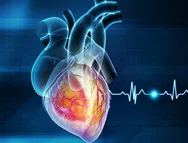


Science in Service
of
Medicineresult
President & CEO Letter
2025 Annual Metrics
Cycle of Translation
Visionary Gifts of Hope


Introduction

Ann Kimball and John W. Johnson Center for Cellular Therapeutics at Houston Methodist

Houston Methodist Dr. Mary and Ron Neal Cancer Center

The Food & Health Alliance within the Houston Methodist Lynda K. and David M. Underwood Center for Digestive Disorders, Immunology Center and the Fondren Inflammation Collaborative

Houston Methodist Cockrell Center for Advanced Therapeutics

Paula and Joseph C. “Rusty” Walter III Translational Research Initiative

Jerold B. Katz Academy of Translational Research

Infectious Diseases Research Fund

George and Angelina Kostas Research Center for Cardiovascular Medicine

New Endowed Chairs Positions

EnMed

Center for Bioenergetics

From Discovery to Clinic


What is "Discovery to Clinic"?

Clinical Research


Houston Methodist Conducts First-Ever Study into a Challenging Situation

Can Regulating Cellular Aging Mitigate Both Cancer and Heart Disease?

Innovative Treatment for Chronic Rhinitis is Safe and Effective


Masters of Disguise: Glioblastomas Trick the Immune System by Masquerading as Reproductive Tissue
Improved Options for Patients with Severe Retinal Vascular Disease

A New FDA-Approved Treatment for Sufferers of Chronic Constipation

Houston Methodist joins the Gulf Coast Consortia

Outcomes, Quality and Healthcare Performance


New Findings on RNA Helicases May Yield New Intestinal Disease Therapy

Houston Methodist and Pennsylvania State University Collaborate on a Smartphone App That Could Revolutionize Stroke Diagnosis

New Frontiers to Improve Cardiovascular Medicine and Disease Management

Ongoing Lessons in a Pandemic

Transplants can Boost Survival Rate of Patients with Unresectable Liver Cancers

Telehealth Video Visits During the COVID-19 Pandemic – a Glimpse into the Future?

SARS-CoV-2 Induced Chronic Oxidative Stress and Endothelial Cell Inflammation May Increase Likelihood of Cardiovascular Diseases and Respiratory Failure

Restorative Medicine


Lessening Pain After Knee Replacement Surgery

Do Motor Neurons First Die in the Brain? Study Provides Clues about ALS Origins

Bringing Back Hand Function in People with Complete Spinal Cord Injury

Novel Vascular Engineering Platforms Are a Boon for Bioengineering

Ultra-high-Resolution Scanner Reveals if Knee Injury Advances to Osteoarthritis

Houston Methodist Model Demonstrates Reversal from Heart Failure State, Creating the Potential for Innovative Treatment Avenues

Precision Medicine


Rapidly Scalable, All-Inducible Neural Organoids Could Facilitate Drug Screening for Neurological Diseases

Importance of the Coronary Artery Calcium Score in Risk Assessment and Prevention of Atherosclerotic Cardiovascular Disease

COVID-19 Infection in Crucial Brain Regions May Lead To Accelerated Brain Aging

Interleukin 9 Secreting Polarized T Cells Show Potential in Solid and Liquid Tumor Treatment

The NanoLymph: Implantable. Adaptable. Anti-cancer

Science in Service
of
Medicine
From the President
2025 Annual Metrics
Cycle of Translation
result
Center for Neural Systems Restoration
In the spirit of collaboration, Houston Methodist and Rice University joined forces with the opening of the Center for Neural Systems Restoration (CSNR), which is aimed at discovering how the human brain processes perception, cognition and behavior to find novel solutions for brain and spinal cord diseases and injuries. The center serves as an incubator for advancing the frontiers of translational neuroscience—understanding the function of the human brain and developing next-generation technologies, neural prosthetics and rehabilitation regimens for the treatment of neurological conditions.
Napping for The Win: Why Short Periods of Sleep Improve Behavioral Performance

Nappers rejoice!
People who take short naps during the day—typically associated with non-rapid eye movement (NREM) sleep—demonstrate the benefits of even short periods of sleep with improved learning, memory, and perceptual performance. This idea that sleep improves cognitive function has been around for a century, but the underlying neural mechanisms have remained elusive.
To further interrogate the underlying neural mechanisms of the cognitive benefits of sleep, Valentin Dragoi, PhD, Rosemary and Daniel J. Harrison III Presidential Distinguished Chair in Neuroprosthetics, and team used multiple-electrode recordings in areas of the cortex involved in task-related activity to examine the dynamics and information coding in neural populations before, during and after sleep, and their impact on behavioral performance.

Valentin Dragoi, PhD
In a recent study published in Science, Dragoi’s team used multi-electrode intracranial arrays positioned on the head to examine the spiking activity of 4422 neurons recorded across three cortical areas. To define epochs of NREM sleep, the team utilized automated sleep recognition software incorporating all components of polysomnography, including electroencephalogram, electrooculography, and electromyography.
Evidence shows that brief naps can consolidate memory and improve behavioral and perceptual performance. The team also focused on studying the effects of short sleep periods (30 minutes of rest). They learned increased delta power (2-4 Hz) during slow wave sleep was accompanied by increased synchronized firing in neural population activity in each brain area recorded. Surprisingly, delta-band synchrony in population activity during sleep further caused a desynchronization of neural responses and improvement in perceptual performance during subsequent cognitive tasks.
This could be a mechanism by which the brain maintains stability of population activity after sleep-induced synchronized neural responses. Our results provide proof of concept for stimulation procedures to improve perceptual performance in the absence of sleep and may set the stage for future neuromodulation in humans.
Valentin Dragoi, PhD
Hypothesizing that the beneficial effects of sleep could be reproduced in their model by electrically stimulating neural populations in the delta-frequency band, they conducted blocks of stimulation for 20 to 30 minutes by generating synchronous electrical pulses in the delta frequency band on eight channels of the electrode array. Remarkably, electrical stimulation of the visual cortex during quiet wakefulness emulated the restorative effects of sleep in the absence of sleep.
“This could be a mechanism by which the brain maintains stability of population activity after sleep-induced synchronized neural responses,” said Dragoi, Scientific Director of CNSR and Professor, Electrical and Computer Engineering at Rice University. “Our results provide proof of concept for stimulation procedures to improve perceptual performance in the absence of sleep and may set the stage for future neuromodulation in humans.”
This study is one of many research areas in collaboration with CSNR to nurture functional interactions between Rice engineers and researchers, and Houston Methodist neurosurgeons, neuroscientists and regeneration biologists to design and test novel prosthetics, interventions and diagnostics on patients. The Center is led by Houston Methodist’s Gavin Britz, MD, MBCCH, MPH, MBA, FAANS, Candy and Tom Knudson Centennial Chair in Neurosurgery and Rice University’s Behnaam Aazhang, PhD, Jr., Director, Electrical and Computer Engineering, Rice Neuroengineering Initiative.




















